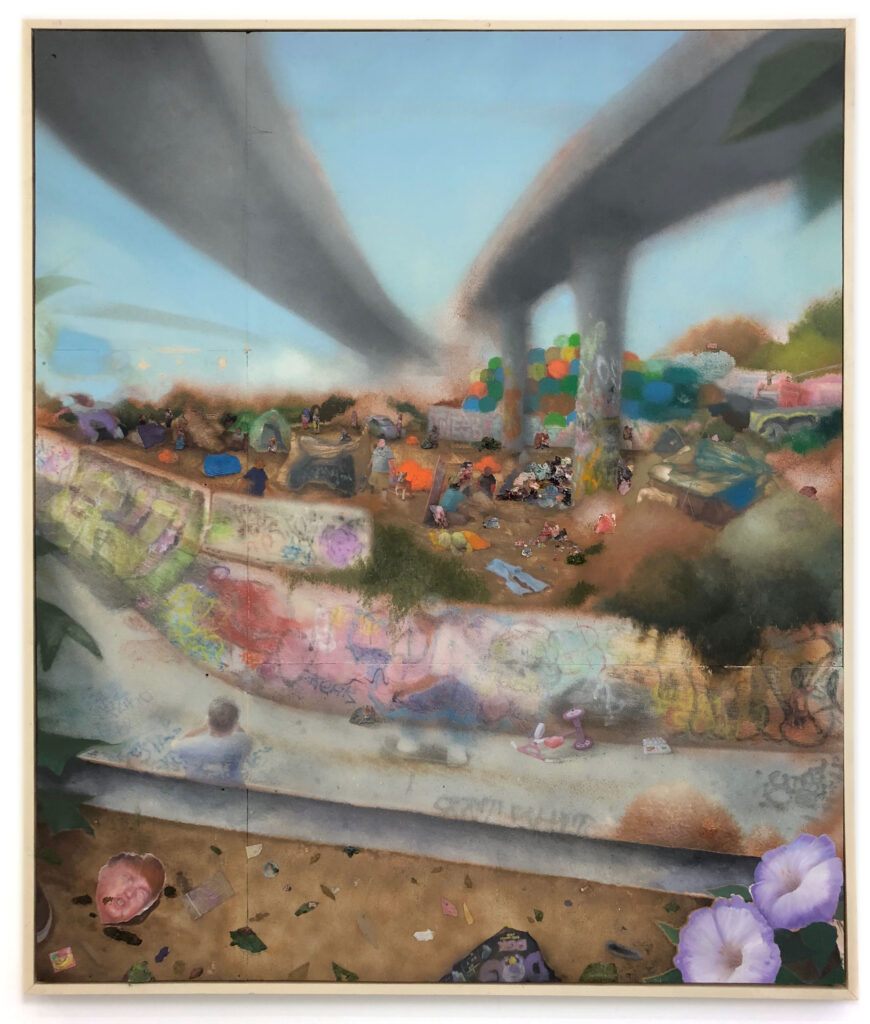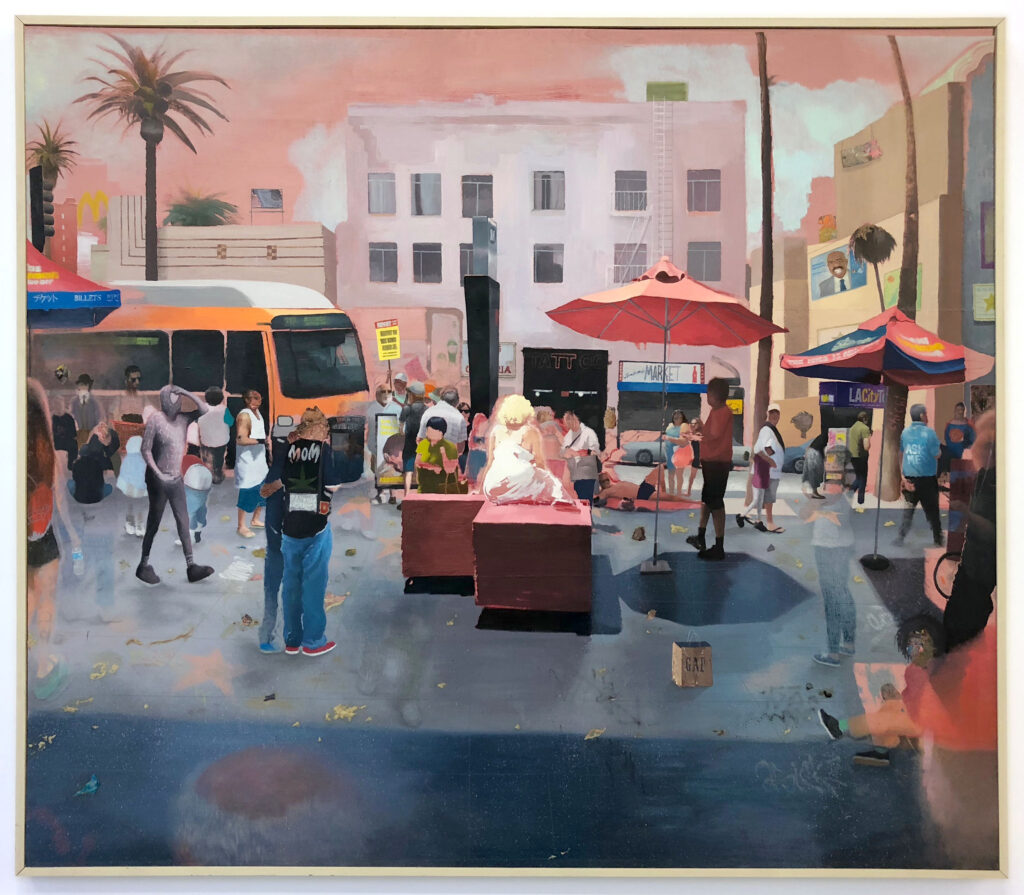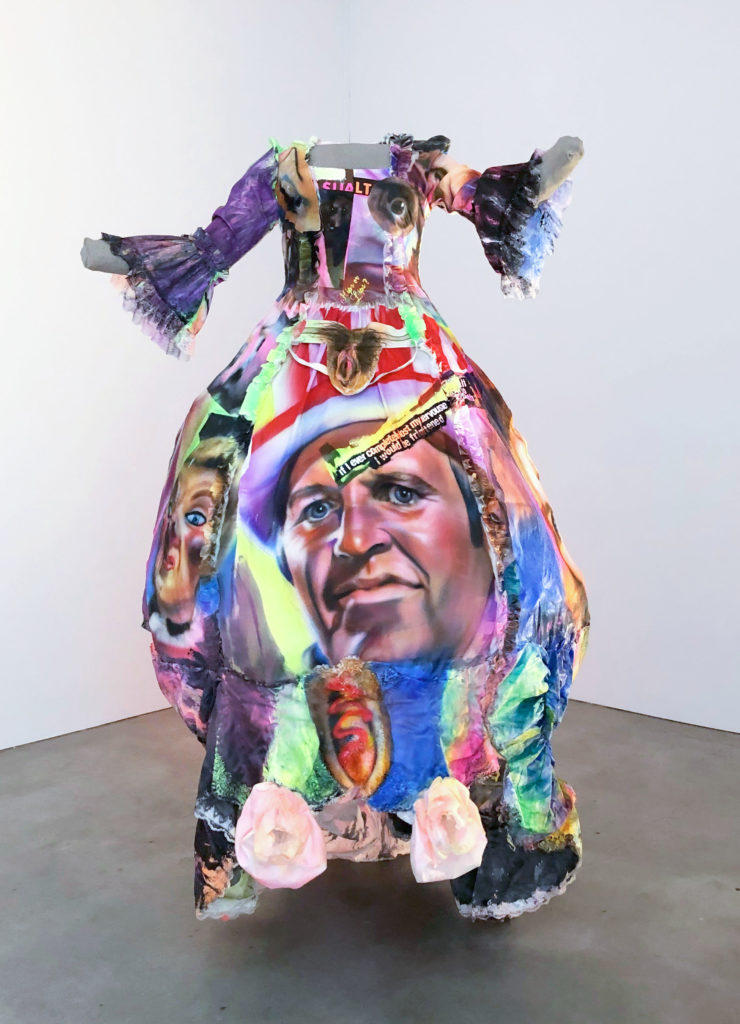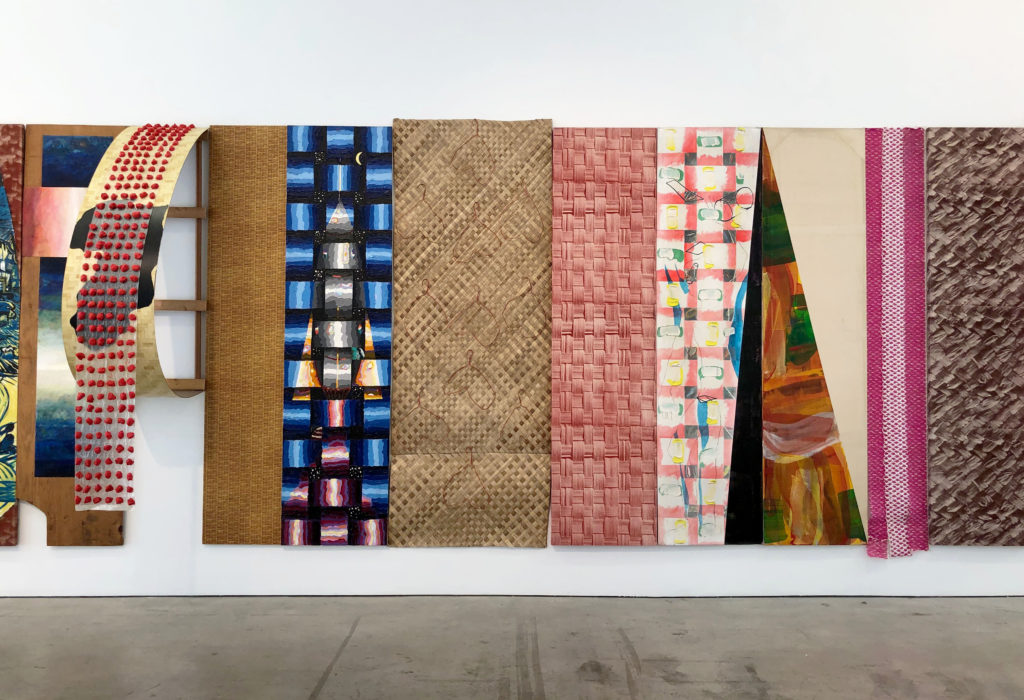
Wasteland Paradise, 2018

Hollywood/ Highland, 2017
These paintings are from Michael Alvarez’s 2018 exhibition We’re Out Here at Marlborough gallery in New York.
From the press release–
Taking inspiration from his immediate surroundings in the domestic sphere, at work in alternative education high schools and Juvenile Detention Centers, and the city at large, Alvarez creates a compound narrative of life as lived in the complex sprawl of his native Los Angeles. From the glitz and dashed hopes of Hollywood Boulevard to the backyard barbeque we begin to see through carefully constructed surfaces, revealing a tender humanity.
Also depicted are more marginal and thornier hybrid sites. Concrete drainage ditches, that double as skateboarding spots and broad canvasses for graffiti murals, are also host to homeless encampments, presenting a friction between an ascendant and hopeful lawlessness and the desperation of pure survival. Similarly, the eponymous painting We’re Out Here, which was created in collaboration with his incarcerated students (Alvarez’s portraits are interspersed with students’ original artworks) underscores the fine line and expanding gulf between opportunity and a dead-end existence.
Technically, Alvarez mixes a matter-of-fact style with dashes of magical realism. Exhibiting a keen understanding of photo-specific technique, figures blur and ghost across the images suggesting movement through time and space in a static image. Appropriately, snapshot source material ranges from the posed semi-formality of the family portrait to the yearbook-candid playfulness of his students. These images are collaged or cleverly composited into painted scenes that are invested with a warmth, humor and realism that supersedes mere depiction.
Alvarez recently was part of a group show at Sow and Tailor in Los Angeles. Follow his Instagram for more updates on his work and shows.



